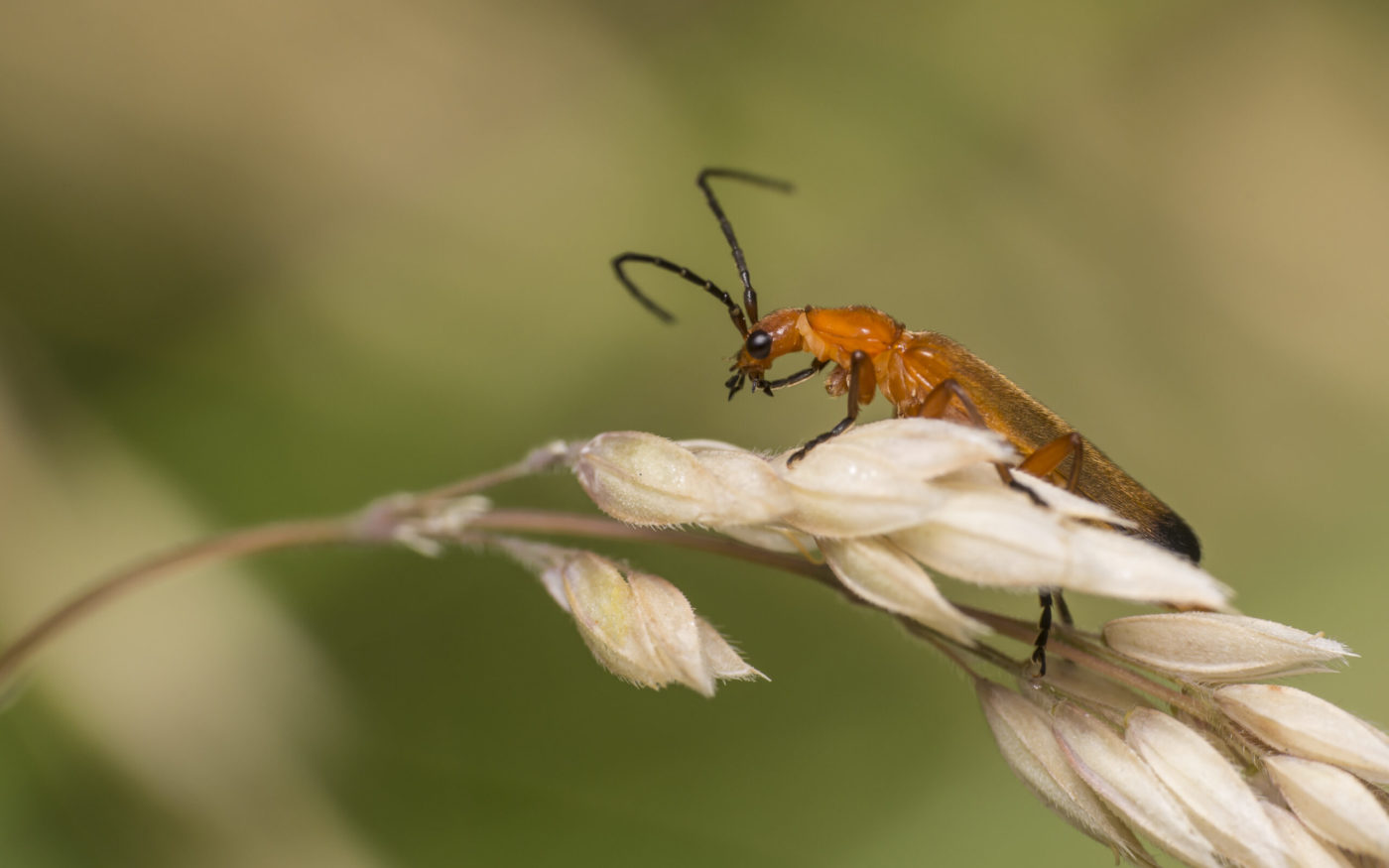Order
Beetles
Family
Cantharidae (Also known as Soldier beetles)
Soldier beetles are so called because many species have blue, yellow, red or black colouring, that looks similar to the colours of regimental uniforms. They are also known as leatherwings as they have soft protective wing cases (elytra). Soldier beetles are quite versatile, preying on flower visiting insects, but also feeding on nectar and pollen.
What do they look like?
Rather misleadingly, common red solider beetles are more orange than red and are slightly shiny. They have a black patch at the end of their wing-cases and black feet (tarsi). They are around 8 to 10 millimetres in length (females are slightly larger). Their body is narrow and rectangular, and they have relatively long antennae. If you see these beetles in the summer, it is likely that you will see them in pairs on open structured flowers such as hogweed.
Where do they live?
The larvae live at the base of long grasses. Adults can be found in gardens, woodland, along hedges and in grasslands. They are often found on open structured flowers such as cow parsley, hogweed, and daises.
Where can they be found?
The common red soldier beetle can be found throughout the UK, with less species being found in the north of Scotland and Ireland.
When can you see them?
Adult common red soldier beetles can be found during the day from June to August and are most active on bright sunny days.
Life cycle
As adults, they live from early June to August, occasionally lasting until September. During this time, they predate on small insects such as aphids, and also feed on pollen and nectar. They spend a large proportion of their life mating and can often be found caught in the act; this is how they also became known as the hogweed bonking beetle. After successfully mating, the females lay (oviposit) their eggs in the soil, these eggs hatch into dark brown larvae. Larvae live at the base of long grasses among leaf litter and prey on snails, slugs, and springtails. Larvae pupate in the soil in the spring. The adults will then emerge in the early summer.
What do they do?
These beetles are a great multitool! They work well as natural pest control, as they eat smaller insects such as aphids, which can often be a nuisance in gardens. They also help to pollinate many open structured flowers. They are a highly beneficial insect, supporting our gardens as well as playing an important role in the British ecosystem.
Did you know?
This species goes by many names, some know it as the bloodsucker beetle, although it does not suck blood. Others call it the hogweed bonking beetle, due to a particular activity it is often found participating in, during the warm summer months.

